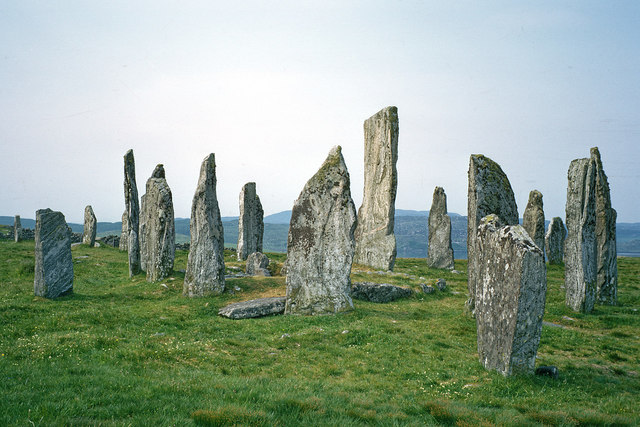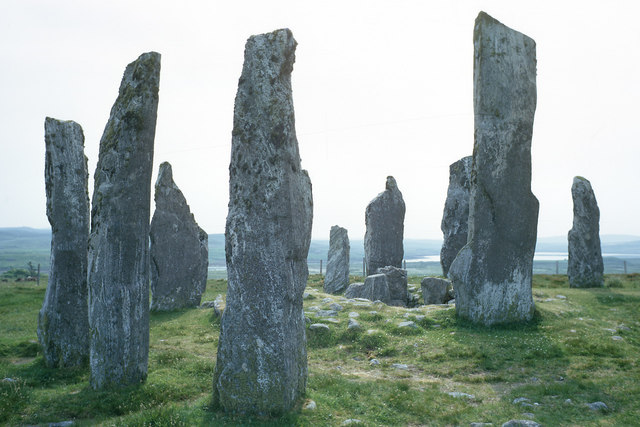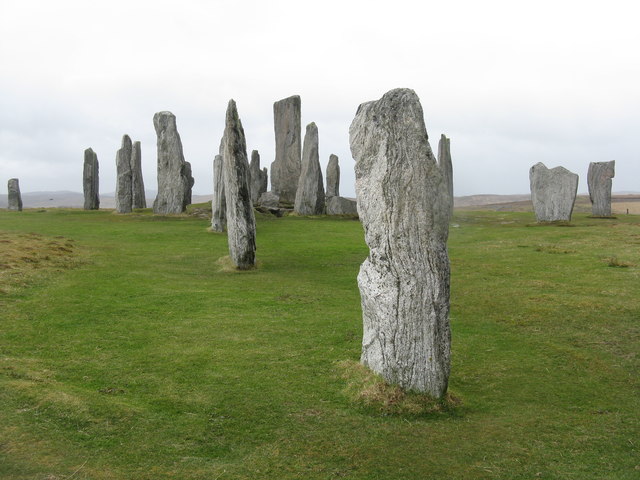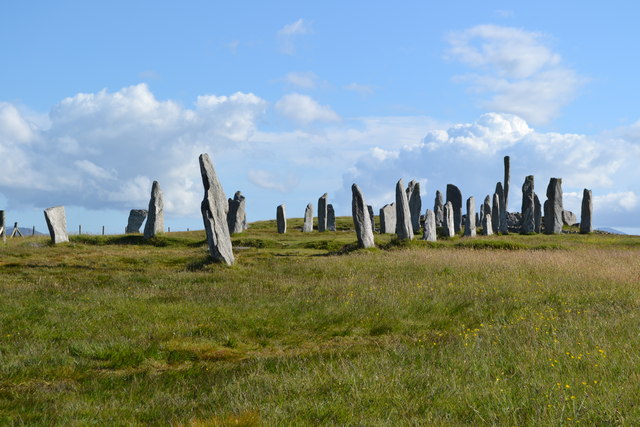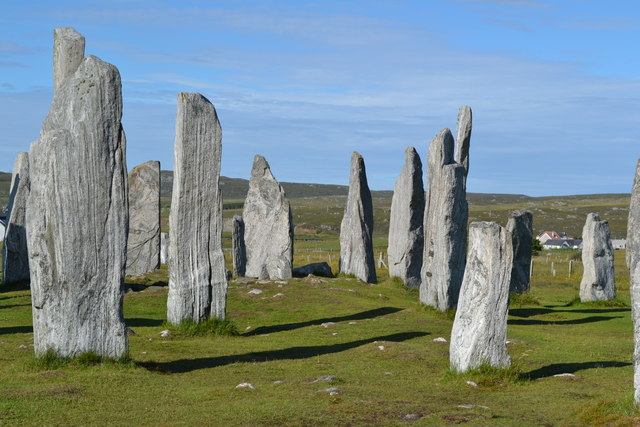12m west of Stornoway off the A859 Isle of Lewis HS2 9DY
Calanais Standing Stones
The Callanish Stones are an arrangement of standing stones placed in a cruciform pattern with a central stone circle. They were erected in the late Neolithic era, and were a focus for ritual activity during the Bronze Age.
Location
About
The Calanais Standing Stones, also known as the Callanish Stones, is a historical landmark located on the Isle of Lewis in Scotland. These standing stones are one of the most significant and impressive prehistoric monuments in Scotland. For visitors to Scotland, the Calanais Standing Stones is a must-see attraction.
The stones are thought to have been erected between 2900 and 2600 BC, during the Neolithic period. There are a total of 13 standing stones, with the tallest standing at 4.8 meters. The stones are arranged in a circle with a diameter of 13.1 meters, and a central stone known as the 'heel stone' standing slightly to the east of the circle. The site is surrounded by other Neolithic monuments, including a chambered cairn and a pair of standing stones.
The Calanais Standing Stones have attracted visitors for centuries. The site has been a place of pilgrimage, ritual and ceremony for thousands of years. Today, visitors come to marvel at the stones and soak in the ancient atmosphere.
Upon arrival at the Calanais Standing Stones, visitors will immediately feel the sense of history and awe. The stones are situated in a wild and windswept landscape, giving visitors a sense of the ancient world. The stones are imposing and mysterious, standing tall and proud against the horizon. Visitors are free to walk around and explore the stones, taking in the impressive craftsmanship and sheer scale of the monument.
The Calanais Standing Stones are surrounded by myths and legends. Some say that the stones were erected by giants, while others believe they were a place of healing and divination. Whatever the truth may be, the stones continue to inspire and intrigue visitors to this day.
Visitors to the Calanais Standing Stones can learn more about the site and its history at the nearby visitor center. The center features exhibits on the site's construction, as well as its role in the Neolithic world. Visitors can also enjoy the on-site cafe and gift shop.
In conclusion, the Calanais Standing Stones is a historical landmark that should not be missed by any visitor to Scotland. The site is awe-inspiring and full of mystery, making it a perfect destination for those looking to explore the country's ancient history. The standing stones are a testament to the ingenuity and creativity of our ancestors, and a reminder of the power of the human spirit.
Things to do nearby
Calanais Standing Stones, located on the Isle of Lewis in the Outer Hebrides of Scotland, is a unique and mysterious attraction that draws visitors from all over the world. The standing stones date back over 5,000 years and are thought to have been used for rituals and ceremonies by the Neolithic people who built them. While the stones are undoubtedly the main attraction, there are plenty of other things to see and do in the area. Here are some top picks for places to visit and things to do nearby Calanais Standing Stones:
1. Gearrannan Blackhouse Village
Located just a few miles from the stones, Gearrannan Blackhouse Village is a beautifully preserved example of traditional Scottish island life. The village consists of a cluster of thatched-roof cottages made from stone and turf, some of which date back over 200 years. Visitors can explore the village and learn about the traditional way of life, which was sustained through fishing, crofting, and weaving.
2. Callanish Visitor Centre
If you want to learn more about the history and significance of the standing stones, the Callanish Visitor Centre is a great place to start. The centre has a range of exhibits that explain the archaeological and cultural context of the site, as well as a gift shop and café.
3. Dalbeg Beach
For a change of pace from the ancient stones, head to Dalbeg Beach, a stunning stretch of white sand and crystal-clear water. The beach is a popular spot for swimming, sunbathing, and picnicking, and the views across the Atlantic are breathtaking.
4. Arnol Blackhouse
Another example of traditional island life can be found at the Arnol Blackhouse, a restored 19th-century thatched-roof croft house. The house has been preserved exactly as it would have been lived in by its last occupants, giving visitors a glimpse into what life was like for the islanders in the not-too-distant past.
5. The Butt of Lewis
If you're looking for a bit of adventure, head to the Butt of Lewis, the northernmost point on the Isle of Lewis. Here you'll find a dramatic cliff-top lighthouse and some of the most rugged and unspoiled coastline in Scotland. The area is popular with birdwatchers, who come to spot puffins, gannets, and other seabirds.
6. Stornoway
The main town on the Isle of Lewis, Stornoway, is a bustling hub of activity with plenty of shops, restaurants, and cultural attractions. Highlights include the Lewis Castle, an imposing Victorian mansion that now houses the Museum nan Eilean, and the An Lanntair arts centre, which showcases the best of contemporary Scottish art.
7. Lews Castle Grounds
The Lews Castle Grounds, located just outside Stornoway, are a beautiful and tranquil parkland that offer plenty of opportunities for walking, cycling, and wildlife spotting. The grounds are also home to a golf course, a museum, and a café.
In conclusion, while the Calanais Standing Stones are undoubtedly the star attraction of the area, there are plenty of other places to visit and things to do nearby. From exploring traditional island life at Gearrannan Blackhouse Village and Arnol Blackhouse, to soaking up the sun at Dalbeg Beach and hiking the rugged coastline at the Butt of Lewis, there is something for everyone on the Isle of Lewis.
Opening Hours
| Wednesday | Open 24 hours |
|---|---|
| Thursday | Open 24 hours |
| Friday | Open 24 hours |
| Saturday | Open 24 hours |
| Sunday | Open 24 hours |
| Monday | Open 24 hours |
| Tuesday | Open 24 hours |
